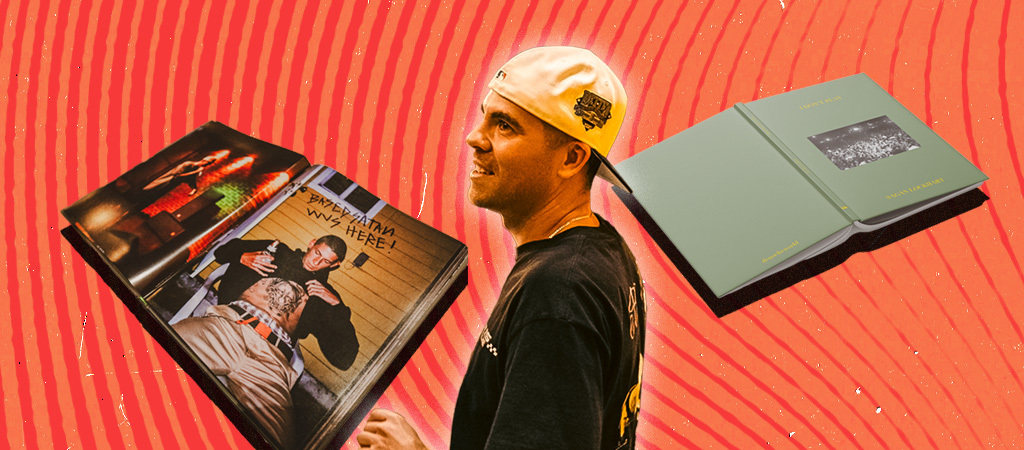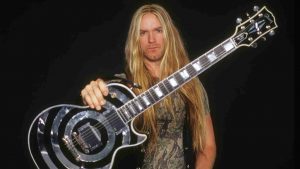Zig-Zag/Merle Cooper
Hip-hop’s global importance is often talked about, but what often goes overlooked in those discussions is just how integral photography has been to its rise — and its continued authenticity as a culture. It’s so hard for hip-hop to be completely co-opted or corporatized because its rise has been documented so heavily by those within it.
Take Sagan Lockhart, for instance. Once a humble apparel salesman in Los Angeles’ fabled fashion district, Fairfax, Lockhart’s interest in photography led to him becoming the unofficial photographer for Odd Future as they rose to stardom, terrorizing local skate shops and sending parents clutching for their pearls. Now, the group’s members have Grammys (Tyler The Creator has a Best Rap Album award for each of his last two albums) and could potentially be adding Emmys to their prestigious collections (former member Lionel Boyce is up for an Outstanding Supporting Actor in a Comedy Series award for The Bear).
With all that success ahead of them, though, there’s no better time to look back at their beginnings — which is what Lockhart’s first book, I Don’t Play does. After hosting a jam-packed launch party sponsored by Zig-Zag rolling papers brand, Lockhart jumped on a Zoom call with Uproxx to break down the process for his book, the LA underground’s skate shop epicenter, and what it means to have captured history in the making.
-ism
What made you want to put out a photo book now, and what went into specifically using Odd Future stuff for it?
It was just a project that a lot of people had been asking for over the years. Some friends of mine started a publishing company, and the way that they presented it to me just made it seem pretty seamless and easy for me to get done finally after all these years, so I was like, “Yeah, sure, let’s do it.” I was kind of just expecting to just make 10 copies, but it went a little bit crazier than that.
I started taking photos probably around ’09, 2010, and that’s when I was working on Fairfax and all the Odd Future stuff was going on, so I kind of just learned how to take photos with them as a lot of the first subjects. It wasn’t this intentional thing of making this book around Odd Future. It’s just that a lot of my earlier photos from this time period that I was showcasing in there just happens to be a lot of them. There’s other experiences and places and people that I wanted to show in the book that I was also shooting, and all of that is in there, but from 2010 to 2013, which is the bulk of the book, there was a lot of Odd Future stuff going on. It wasn’t like this intentional, “Let’s make an Odd Future book.” That’s just what life was at the time.
What did you take away from the launch party?
If one person comes to something that I’m doing, it’s just a reminder that like, “Okay, I’m doing something cool,” but when hundreds of people come to your thing? I was just overwhelmed with gratitude, and to have the support from my friends and new friends, and the event space, and [publicist] Pristina helping out, and especially Zig-Zag supporting the event and coming through with their people. Just super stoked on the way that it turned out, for sure. Definitely super thankful from our sponsors and Zig-Zag for helping out with that.
When did you get interested in photographing or documenting your experiences?
My interest in photography stems from… My godfather was a photographer for Hustler and sh*t like that, so I was always like, “Man, this job was dope. I like what this guy does.”
I’m sure any kid would
When I was younger, I think every young skateboarder, you want to be a professional skateboarder, but as I was getting older, and wanting to do other things, and seeing that maybe that route was not a possibility for me, I was already stoked for working for these street wear and skate adjacent brands, but I was like, “Maybe a skate photographer or something would be dope to do.” A friend of mine just gave me this old 35 millimeter camera, and he was like, “Yo, you want to take photos? Just play around with this and just see where you want to go.”
I want to know what timeframe you were going over there at, just out of curiosity?
Probably around the same time, but just in the interest of like, “Oh, I want to get this Hundred shirt and be out.” I was never like, “Let me hang out, let me kick it.” I was a sneaker kid, so that was what I was always trying to get… I was more on Melrose than Fairfax, honestly.
To me, during this time period, Fairfax was a little bit more… Maybe more of a secret. I mean, La Brea had been around forever. Union was the spot we would go to as kids, and then there was Undefeated and Stussy over there, and then Supreme started the new wave on Fairfax, but this is all very pre-internet.
I was working a full-time job over there, so it was like, “I don’t think I would go out of my way to go shoot Fairfax,” but I was there for 40 hours a week, so I didn’t have a choice. It was like, “I guess this is where I’m going to take photos at.” But from the jump, there was already people hanging out. My first gig over there, before I was at Diamond and met the Odd Future guys, I was working at The Hundreds. Dom Kennedy was hanging out every single day. Nas would come in. Nipsey [Hussle] would kick it all the time. There was already just all these characters that I was lucky enough to be around and just talk with, so it was super natural that when I got the camera to just start shooting whoever was around me.
-ism
When you look at the photos from that time period, and then you look at how it’s evolved, what’s your overall impression of the changes that have been made, or how things look different and how much things look the same?
When I do look at it, I’m like, “Damn, all these people went on to do really, really great things.” Without them going on to do that with their lives, I don’t think the book would be as impactful, so I guess that’s what I think when I look at it. I’m like, “Damn, Lionel was just chilling with us, but now he’s up for an Emmy in acting.” That was never a thought in my mind at that time period.
There’s some photos in there where it’s, like there’s a couple old Fairfax shops in there where it’s like, “These businesses are just not there, and it’s going to look completely different.” There’s probably some show photos in there where you’re like, “Oh, this looks like the same exact that I see today.” To be a part of something and some music history, even the smallest scale of where I’m at, just super thankful. A lot of these dudes I just grew up idolizing and listening to, and knowing their albums word for word as a kid. To be a part of that in some capacity, like I’m saying, I’m just super thankful for it.
What do you want people to take away from the book, from the documentation of these experiences?
If I had to split it into two things, I would say for the people who were there, or for the fans from around the world who were looking at this under a microscope at that time, I would hope that they look at it and it kind of brings them back to that time period, and just like, “Oh sh*t, I remember this,” or gives them some sort of positive feelings.
Then for the younger crowd of the people who weren’t there, maybe it just shows them maybe what they missed out on. I got people messaging me about this, and they’re 15, 16, and I’m like, “Damn, you were literally born when this stuff was first going on.” So maybe I hope that y’all look at it, and it just shows you this time period that you missed out on just because you were hella young.
They can take from that. They can learn things like, don’t let anyone stop you. Pursue, pursue. Do the thing that sounds crazy, even if everybody calls you crazy. My guy Shake used to complain about Tyler all the time, because Tyler was terrorizing his blog 2DopeBoyz at the time, and he was just like, “Yeah, that kid’s annoying. But man, he’s a genius. He’s so smart.”
I think that the industry needed and still needs a personality that f*cking strong. Because if he wasn’t so intense, he wouldn’t be making those waves worldwide like that. We didn’t need a humble individual at the time. There’s already some of those. We needed something very strong and crazy like that to shake things up.



